Safe and reliable school transportation is crucial to modern education systems. Governments worldwide, including in India and the United States, have implemented school transportation policies to address this need. Let’s explore how these policies shape school transportation safety and contribute to student safety.
The Need for Stringent Policies in School Transportation
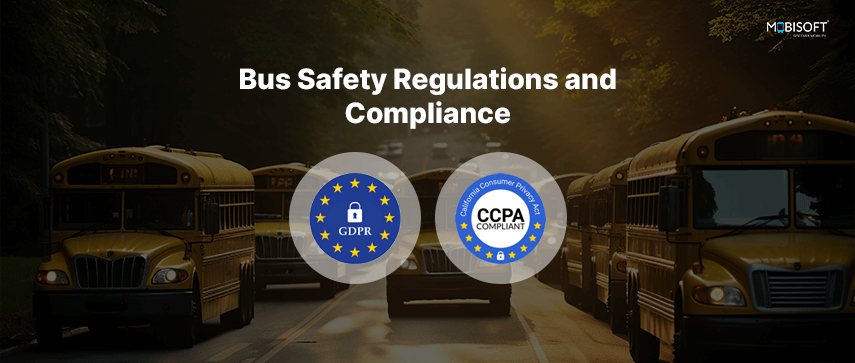
School buses and vans transport millions of students daily. According to the National Highway Traffic Safety Administration (NHTSA), approximately 25 million children ride school buses daily in the U.S., while India’s Ministry of Road Transport and Highways (MoRTH) estimates over 70 million students rely on school transportation. Without proper regulations, school transportation can pose risks such as accidents and vehicle malfunctions. A World Health Organization (WHO) report highlights that road traffic injuries are the leading cause of death among children and young adults aged 5-29 worldwide. School transportation safety serves as a safeguard, ensuring safety remains a priority.
Key Government Policies for School Transportation Safety
Vehicle Design and Maintenance Regulations
Governments mandate specifications for school buses to enhance safety:
- Color Coding and Signage: Yellow buses with “School Bus” signage ensure visibility.
- Speed Governors: Limit speed to reduce accident risks.
- Emergency Exits: Enable quick evacuation during emergencies.
- Periodic Inspections: Maintain vehicle roadworthiness.
A National Safety Council study found that proper maintenance can reduce mechanical failure-related accidents by up to 30%. Countries like Canada and the UK enforce mandatory biannual inspections to ensure compliance.
Driver Qualification and Training
Strict driver qualification criteria include:
- Mandatory Licensing and Background Checks to ensure drivers have a clean record.
- Specialized Training in child safety, defensive driving, and emergency response.
- Zero-tolerance policies for drug and alcohol consumption among school bus drivers.
A U.S. Department of Transportation study found that trained drivers are 50% less likely to be involved in accidents. In India, the Supreme Court-mandated guidelines require school bus drivers to have a minimum of five years of driving experience.
Implementation of GPS Tracking Systems
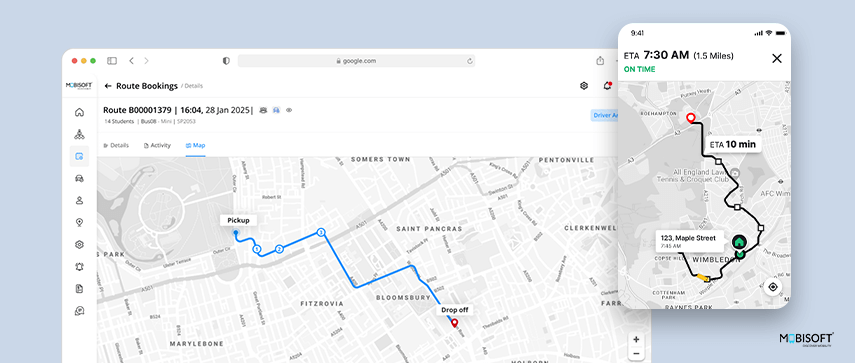
Governments mandate GPS tracking systems in school buses to:
- Monitor routes and schedules.
- Provide real-time updates to parents and school authorities.
- Ensure immediate response in case of deviations or emergencies.
A University of California study found that schools using school bus GPS tracking software reported a 40% decrease in late arrivals and a 25% reduction in safety incidents. In India, the CBSE board mandates GPS for all affiliated school buses.
Seat Belt and Seating Capacity Enforcement
To prevent overcrowding and enhance safety, regulations specify:
- Seating capacity limits to prevent overloading.
- Mandatory seat belt installation in school vehicles.
The NHTSA reports that seat belts can reduce the risk of injury in a crash by 45%. Some U.S. states, like Texas and California, require three-point seat belts in all new school buses.
Child Safety Awareness Programs
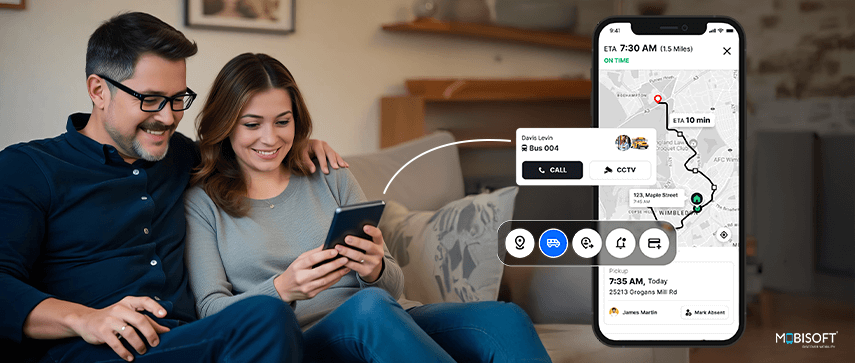
Governments conduct awareness campaigns to educate students, parents, and drivers about transportation safety.
Research from the National Safety Council shows that awareness programs can lead to a 20% reduction in unsafe behaviors among students. The European Road Safety Charter emphasizes the importance of early education in school transportation safety.

The Impact of Policies on School Transportation Safety
Government policies have significantly improved school transportation safety:
- Reduced Accidents: Enforcing speed limits and periodic maintenance checks decreases accident rates. The NHTSA states that school buses are 70 times safer than passenger vehicles for transporting children.
- Enhanced Accountability: GPS school bus tracking systems ensure adherence to designated routes and schedules.
- Increased Parental Confidence: Real-time school bus tracking and stringent safety measures offer parents peace of mind. A survey by the National Association of State Directors of Pupil Transportation Services found that 85% of parents feel more secure knowing their child’s bus is tracked.
- Safer Infrastructure: Policies encourage adopting advanced technologies, such as AI-powered surveillance systems and electric school buses. The International Council on Clean Transportation reports that electric school buses can reduce greenhouse gas emissions by up to 70%.
Challenges in Policy Implementation
Despite the benefits, challenges remain:
- Compliance Gaps: Small-scale transport operators struggle to meet strict standards. A National School Transportation Association study found that 30% of small operators lack the resources to comply with all safety regulations.
- Lack of Monitoring: Insufficient enforcement mechanisms lead to lapses in safety.
- Cost Barriers: Upgrading vehicles and adopting technologies can be financially challenging. Research from the American School Bus Council indicates that a new school bus costs over $100,000, making compliance difficult for many districts.
The Way Forward
To address these challenges and improve school transportation safety, governments should:
- Offer Subsidies or Incentives: Provide financial support for upgrading vehicles.
- Strengthen Monitoring and Enforcement Mechanisms: Enhance oversight to ensure adherence to safety standards.
- Collaborate with Technology Providers: Implement cost-effective safety solutions.
- Encourage Stakeholder Involvement: Foster collaboration among schools, parents, and transport operators for collective accountability.
Leveraging Technology for Safer School Transportation
Modern technology plays a crucial role in overcoming safety challenges. Mobisoft's School Transportation Software Solution provides a comprehensive platform that enhances safety and efficiency. With real-time GPS tracking, route optimization, driver monitoring, and automated alerts, the solution helps schools and transport providers comply with regulations while ensuring school transportation safety. By integrating advanced technology, schools can streamline operations, reduce risks, and offer parents greater peace of mind.
Conclusion
Government policies play a pivotal role in shaping school transportation safety. By addressing risks and enforcing stringent measures, these regulations create a safer environment for students. However, continuous innovation, collaboration, and monitoring are necessary to overcome challenges and ensure that every child’s journey to school remains safe. With the right policies and practices in place, we can build a future where school commutes are secure and stress-free.
References
- National Highway Traffic Safety Administration (NHTSA): https://www.nhtsa.gov/
- Ministry of Road Transport and Highways (MoRTH), India: https://morth.nic.in/
- World Health Organization (WHO) Road Safety Report: https://www.who.int/roadsafety
- National Safety Council: https://www.nsc.org/
- U.S. Department of Transportation: https://www.transportation.gov/
- International Council on Clean Transportation: https://theicct.org/
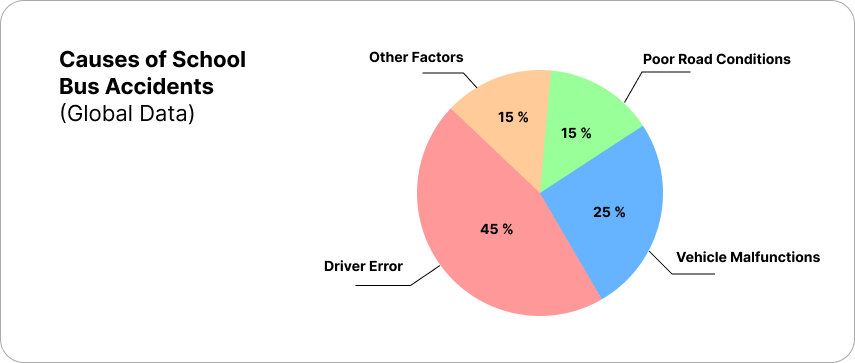
Source:
- National Highway Traffic Safety Administration (NHTSA)
- International Road Safety Data from WHO
- National Safety Council Reports
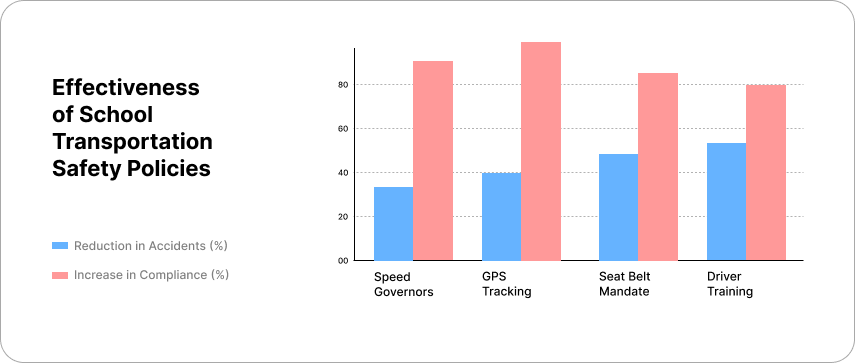
Source:
- National Highway Traffic Safety Administration (NHTSA)
- National Association for Pupil Transportation (NAPT)
- International Transport Forum (ITF) Reports
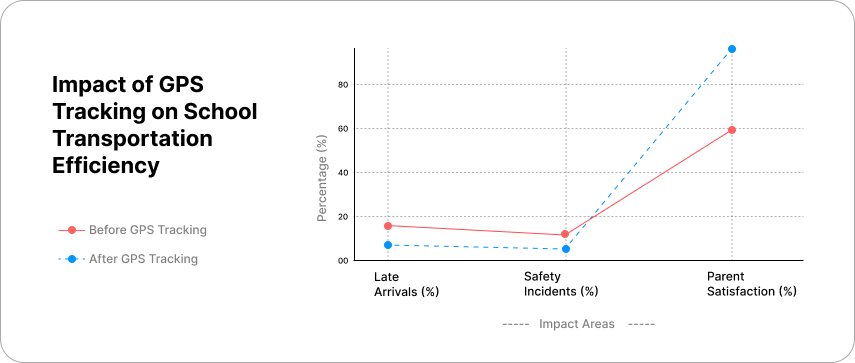
Source:
- University of California Study on GPS Tracking Efficiency
- National Association of State Directors of Pupil Transportation Services (NASDPTS)
- School Transportation News Reports
References
- National Highway Traffic Safety Administration (NHTSA) – https://www.nhtsa.gov/road-safety/school-bus-safety
- National Safety Council (NSC) – https://www.nsc.org/road/safety-topics/school-bus-safety
- National Association for Pupil Transportation (NAPT) – https://www.napt.org/
- International Transport Forum (ITF) Reports – https://www.itf-oecd.org/road-safety
- National Association of State Directors of Pupil Transportation Services (NASDPTS) – http://www.nasdpts.org/
- School Transportation News Reports – https://stnonline.com/


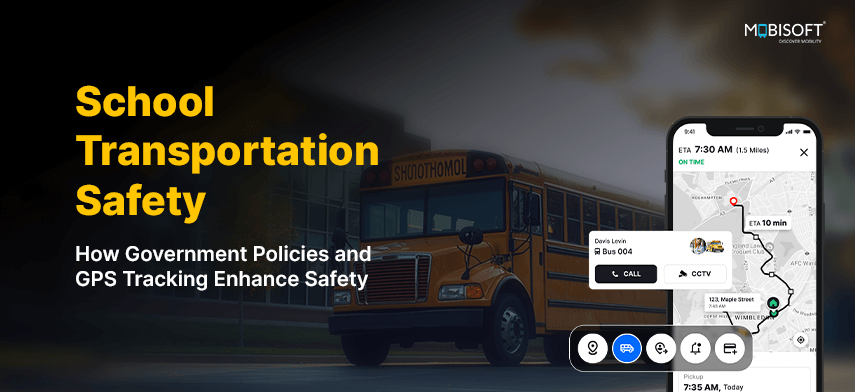


 February 12, 2025
February 12, 2025


